
Lieutenant-General Sir John Moore, was a British Army general, also known as Moore of Corunna. He is best known for his military training reforms and for his death at the Battle of Corunna, in which he repulsed a French army under Marshal Soult during the Peninsular War. After the war General Sarrazin wrote a French history of the battle, which nonetheless may have been written in light of subsequent events, stating that "Whatever Buonaparte may assert, Soult was most certainly repulsed at Corunna; and the English gained a defensive victory, though dearly purchased with the loss of their brave general Moore, who was alike distinguished for his private virtues, and his military talents."
General Sir William Francis Patrick Napier KCB was an Irish soldier in the British Army and a military historian.
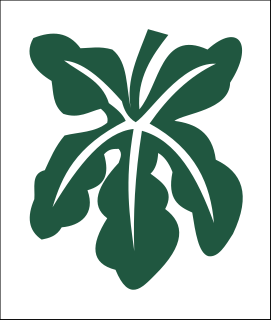
III Corps was an army corps of the British Army formed in both the First World War and the Second World War.

The Royal Gurkha Rifles (RGR) is a rifle regiment of the British Army, forming part of the Brigade of Gurkhas. Unlike other regiments in the British Army, RGR soldiers are recruited from Nepal, which is neither a dependent territory of the United Kingdom nor a member of the Commonwealth. The regiment's motto is Better to die than to be a coward.

Sandgate is a village in the Folkestone and Hythe Urban Area in the Folkestone and Hythe district of Kent, England. It had a population of 4,225 at the 2001 census. It is the site of Sandgate Castle, a Device Fort. H.G. Wells lived at Spade House, and it was also the birthplace of comedian Hattie Jacques. Sandgate is the location of the Shorncliffe Redoubt, a Napoleonic era earthwork fort associated with Sir John Moore and the 95th Regiment of Foot, known as the 95th Rifles. St Paul's Church lies next to the Saga building, which is built on the site of Embrook House.
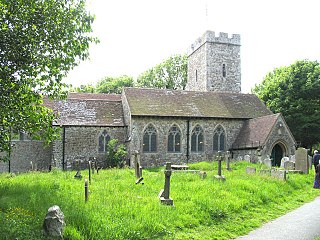
Cheriton is a northern suburb of Folkestone in Kent. It is the location of the English terminal of the Channel Tunnel as well as of the major army barracks of Shorncliffe Camp.
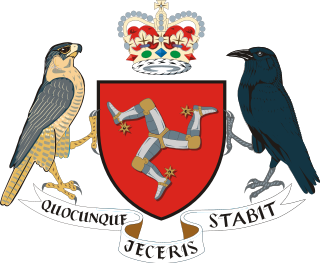
The Speaker of the House of Keys is the principal officer of the House of Keys, the lower house of the Isle of Man legislature. The Speaker is elected from the membership of the House at its first sitting after an election. He is responsible for controlling the procedure of the House and for the authoritative interpretation of its standing orders. He sets the business of the House and authorises the order of business of the House for each sitting. The Speaker uses the letters SHK after his name.

The Rhodesian Special Air Service or Rhodesian SAS was a Rhodesian special forces unit. It comprised:

Copthorne is a village in the Mid Sussex district of West Sussex, England. It lies close to Gatwick Airport, 25.5 miles (41 km) south of London, 21.5 miles (35 km) north of Brighton, and 36 miles (58 km) northeast of the county town of Chichester. Nearby towns include Crawley to the southwest and East Grinstead to the east. It is the most northerly ecclesiastical parish in the Diocese of Chichester in the Church of England, and together with Crawley Down makes up the civil parish of Worth.

Shorncliffe Redoubt is a British Napoleonic earthwork fort. The site is approximately 300 feet by 300 feet and is situated on the Kentish Coast in Sandgate, Kent.
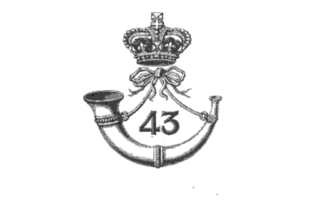
The 43rd (Monmouthshire) Regiment of Foot was an infantry regiment of the British Army, raised in 1741. Under the Childers Reforms it amalgamated with the 52nd (Oxfordshire) Regiment of Foot to form the 1st and 2nd battalions of the Oxfordshire Light Infantry in 1881. The regiment went on to become the Oxfordshire and Buckinghamshire Light Infantry in 1908.

Copthorne Barracks was a British Army military installation in Copthorne, a suburb of Shrewsbury in Shropshire, England.

Shorncliffe Army Camp is a large military camp near Cheriton in Kent. Established in 1794, it later served as a staging post for troops destined for the Western Front during the First World War. Its closure was announced in 2016.
Lieutenant-General Sir Kenneth MacKenzie Douglas, 1st Baronet (1754–1833), born Kenneth MacKenzie, was the first baronet of the Douglas of Glenbervie, Kincardine Baronetcy. He was created baronet in 1831.
General Sir James Fergusson, was a British Army officer during the Napoleonic Wars and the Governor of Gibraltar from 1855 to 1859.

The Peninsula Barracks are a group of military buildings in Winchester, Hampshire.

Major General David Stewart CB FRSE FLS FSA (Scot) was a Scottish soldier and later author and antiquarian, whose book, Sketches of the Character, Manners, and Present State of the Highlanders of Scotland published in two volumes by Archibald Constable and Co in Edinburgh in 1822, was responsible for largely creating the modern image of the Highlander, the clans and Scottish regiments and is considered the foundation for all subsequent work on highlanders, clans and Scottish regiments system.
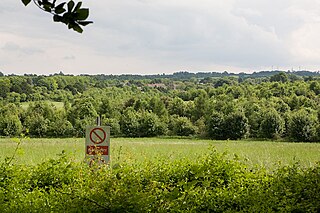
Sir John Moore Barracks is a military installation near Winchester.

Western District was a command of the British Army.

The Specialised Infantry Group is a formation of the British Army, created as a result of the Army 2020 Refine reorganisation, intended to train foreign forces. The SIG approach to training and advising foreign militaries is modeled on US Army Security Force Assistance Brigades (SFABs), with personnel from their two specialised infantry battalions (SIBs) personnel going to the US to be trained and mentored by American SFAB personnel.
This page is based on this
Wikipedia article Text is available under the
CC BY-SA 4.0 license; additional terms may apply.
Images, videos and audio are available under their respective licenses.















